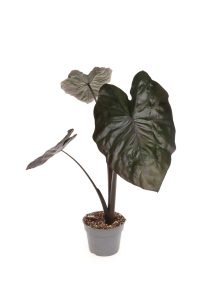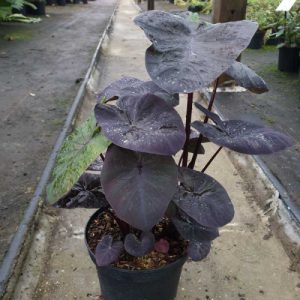- English
- Chinese
- French
- German
- Portuguese
- Spanish
- Russian
- Japanese
- Korean
- Arabic
- Irish
- Greek
- Turkish
- Italian
- Danish
- Romanian
- Indonesian
- Czech
- Afrikaans
- Swedish
- Polish
- Basque
- Catalan
- Esperanto
- Hindi
- Lao
- Albanian
- Amharic
- Armenian
- Azerbaijani
- Belarusian
- Bengali
- Bosnian
- Bulgarian
- Cebuano
- Corsican
- Croatian
- Dutch
- Estonian
- Filipino
- Finnish
- Frisian
- Galician
- Georgian
- Gujarati
- Haitian
- Hausa
- Hawaiian
- Hebrew
- Hmong
- Hungarian
- Icelandic
- Igbo
- Javanese
- Kannada
- Kazakh
- Khmer
- Kurdish
- Kyrgyz
- Latin
- Latvian
- Lithuanian
- Luxembou..
- Macedonian
- Malagasy
- Malay
- Malayalam
- Maltese
- Maori
- Marathi
- Mongolian
- Burmese
- Nepali
- Norwegian
- Pashto
- Persian
- Punjabi
- Serbian
- Sesotho
- Sinhala
- Slovak
- Slovenian
- Somali
- Samoan
- Scots Gaelic
- Shona
- Sindhi
- Sundanese
- Swahili
- Tajik
- Tamil
- Telugu
- Thai
- Ukrainian
- Urdu
- Uzbek
- Vietnamese
- Welsh
- Xhosa
- Yiddish
- Yoruba
- Zulu
- Kinyarwanda
- Tatar
- Oriya
- Turkmen
- Uyghur

Zomera za Colocasia atchuka kwambiri chifukwa cha masamba awo enieni komanso hue wowoneka bwino ndipo nthawi zambiri amagwiritsidwa ntchito m'nyumba komanso m'minda. Ponena za kulima mbewu yogwirizana, munthu angaone kusakaniza komwe sikungowoneka bwino komanso kumathandizanso kukula ndi thanzi la mbewu.

Zomera za Colocasia
Zosiyanasiyana zamitundu ya colocas
Nthawi zambiri chachikulu, chotupa chamtima kapena chotupa cham'mimba, colocasia mbewu zimakhala ndi mawonekedwe a mitundu yobiriwira mpaka yofiirira komanso yopanda masamba. Zomera zosinthikazi zimakula bwino kwambiri, nthawi zambiri zimapezeka nyumba zawo m'magawo odekha, komanso kukhala ndi kusinthasintha kwakukulu. Chifukwa chake, ngakhale posankha zomera zomwe zikugwirizana, wina ayenera kuganiziranso mbali monga kuwala, chinyezi, ndi dothi kuti zipange malo abwino olima.
Malingaliro owonera
Pali malangizo angapo oyambira omwe ayenera kutsatiridwa posankha mbewu zomwe zimafunikira mbewu za Colocasia. Choyamba, munthu ayenera kuganizira kufunika kwa kuunika kwa mtundu wofanana. Kuonetsetsa kuti amatha kukula m'mabowo ofanana, munthu ayenera kusankha mbewu zomwe zimafuna zowoneka ndi za colocasia mbewu. Wina amayeneranso kukhala ndi zofuna zamadzi nthawi zonse. Zomera za Colocasia zimakula bwino kwambiri, chifukwa chake ndizofunikira kuti zibzazi pamodzi zimakhala ndi madzi zimafunikira madzi kukhala ofanana kuti apewe mpikisano. Kuphatikiza apo ndikofunikira ndikokwanira nthaka. Pomwe Colocasia mbewu zimatha kukulira m'madothi kwambiri komanso zokwanira, ndikofunikira kusankha mbewu zomwe zingakuyendereninso mu dothi.
Mitundu yoyenera yazomera
Colocasia plants flourish in the company of ferns. They are most at ease in moist, dark environments; so, the usage of colocasia plants may help you design a landscape that is both peaceful and shady. Two very good choices are Ivy and bird’s nest ferns. These plants’ leaf morphologies are similar to those of colocasia plants, which might help to enhance the appearance generally. Two more varieties of foliage plants said to be well suited for colocasia plants are dieffenbachia and heart-leaf vines. These plants have similar development habits, and they flourish in somewhat shaded conditions. They might complement each other as well as add levels and vividness.
Ponena za akuwoneka, muyenera kusankha maluwa ena maluwa omwe angaike pafupi ndi mbewu za Colocasia. Zomera zoterezi zimaphatikizapo Bedonias ndi dahlias pakati pa ena. Kusiyana kwamphamvu pakati pa kusiyanasiyana kwa maluwa a maluwa awa ndi masamba a mbewu za Colocasia kumawonjezera kuwonekera kwa makonzedwewo ndikuthandizira kupanga mtundu. Ponena za kuphulika kwa maluwa, nthawi zina amafunikira kuwala kochepa. Kumbali ina, ngati munthu asankha mitundu yolekerera mitundu, atha kukhalanso othandiza ndi mbewu za colocasia kuti apange mundawo.
Many herbs, like mint and cilantro, are also fit for usage in combination with taro plants. These plants not only have an appearance that complements taro plants, but their scent might enhance the complete environment of the nearby surroundings. Many herbs also have shallow roots, hence they won’t fight taro plants for nutrients in the ground. Plants of both kinds may so dwell amicably while they are developing.
Although succulents are usually sun-loving plants, if the conditions are right one may grow them next to taro plants. It’s a great idea to choose some shade-tolerant succulents whose unique shapes and textures would accentuate the whole mix and create a variety of visual effects, including fire festival and tiger thorn berry.
Malangizo a Ulimi Wosasamala
Makamaka awiriawiri, ndikofunikira kuti tisangalale ndi mpweya wabwino ndikuwonetsetsa kuti pali malo okwanira pakati pa mbewu zosewerera kwa mpweya kuti zithetse kufalikira kwa matenda ndi tizirombo. Kudulira kokhazikika kwa mbewu za Taro ndi mbewu zomwe zikugwirizana zimathandizira kuti zikhale bwino komanso kukula. Izi zimathandizanso kuwunikira kwa mbewu.
Another rather important thing to accomplish is monitoring the condition of the plants’ health. After paired culture is over, regular inspections of the developing status of the plants and quick changes to the management strategies are crucial to ensure the plants’ welfare. It is advisable to avoid choosing plants with overdeveloped root systems in order to stop influencing the growth of taro crops. This may effectively restrict plant competition and provide an environment fit for normal growth.
Nthawi yomwe imakwanira
Ikani mbewu za Taro m'malo amdima ndi mitundu ina yamitundu ina, kuphatikiza impso ndi lupanga. Amadalirana wina ndi mnzake m'malo otentha ndipo amatha kupanga chilengedwe. Zosavuta izi sizimabala zambiri zolemera komanso zomveka bwino za olowa m'malo.
M'malo omwe pali dzuwa lokwanira dzuwa, begonias amakhala bwino ndi mbewu za Taro. Njira ya chibwibwi imasiyanitsa kwambiri ndi masamba a Tarmo amasamba, zomwe zimathandizira kupanga maudindo omwe akuwoneka. Kusakaniza kumeneku sikungopangitsa malowo kuwoneka bwino kwambiri komanso kumakopa chidwi cha aliyense kudutsamo.
Kubzala zitsamba ngati mint ndi coriander pafupi ndi aro mbewu za taro pakhonde kungakuthandizeni kukulitsani. Kusakaniza uku kumakhala ndi mwayi wogawana ndi dzuwa ndi madzi; Zoyipa za Mint zimatha kuthana ndi udzudzu, kupangitsa kuti malo amoyo akhale omasuka, komanso amathandiza kuti apange malo abwino m'moyo watsiku ndi tsiku.

Royal Hawaiian Aloha Eathent khutu
Zomera za taro ndi njira yotchuka kwa onse oyenda ndi kumbali yakunja chifukwa chamtengo wapatali. Kusankha kuphatikiza koyenera kwa mbewu sikungangolimbikitsa kuyang'ana m'derali komanso kumathandizanso mbewuzo kukula m'njira yabwino. Choyamba kumvetsetsa zofunikira zomwe zikuchitika pazomera zosiyanasiyana komanso zomwe amagwirizana nazo wina ndi mnzake, ndiye kuti zomera za Colocasia kwa wina ndi mnzake, zimathandiza munthu kuti azitha kupeza bwino kwambiri ndi mphamvu zambiri. Kaya mumasankha kuchita mkati kapena kunja, Gwirizanani ndi mbewu zingapo kuti mupange malo obiriwira komanso okongola obiriwira, pangani chisangalalo chowoneka bwino komanso chamalingaliro. Kaya mumasankha kuzigwiritsa ntchito pazifukwa zokongoletsa kapena zifukwa zowoneka bwino, colocasia mbewu zimakhala gawo lofunikira pa ndandanda yanu yolimbana ndi mitundu ina ya mbewu.



